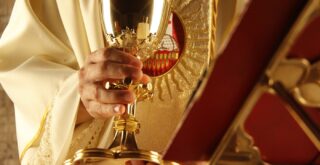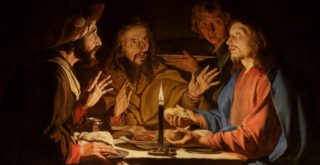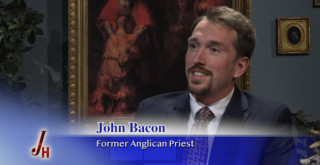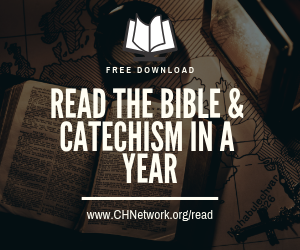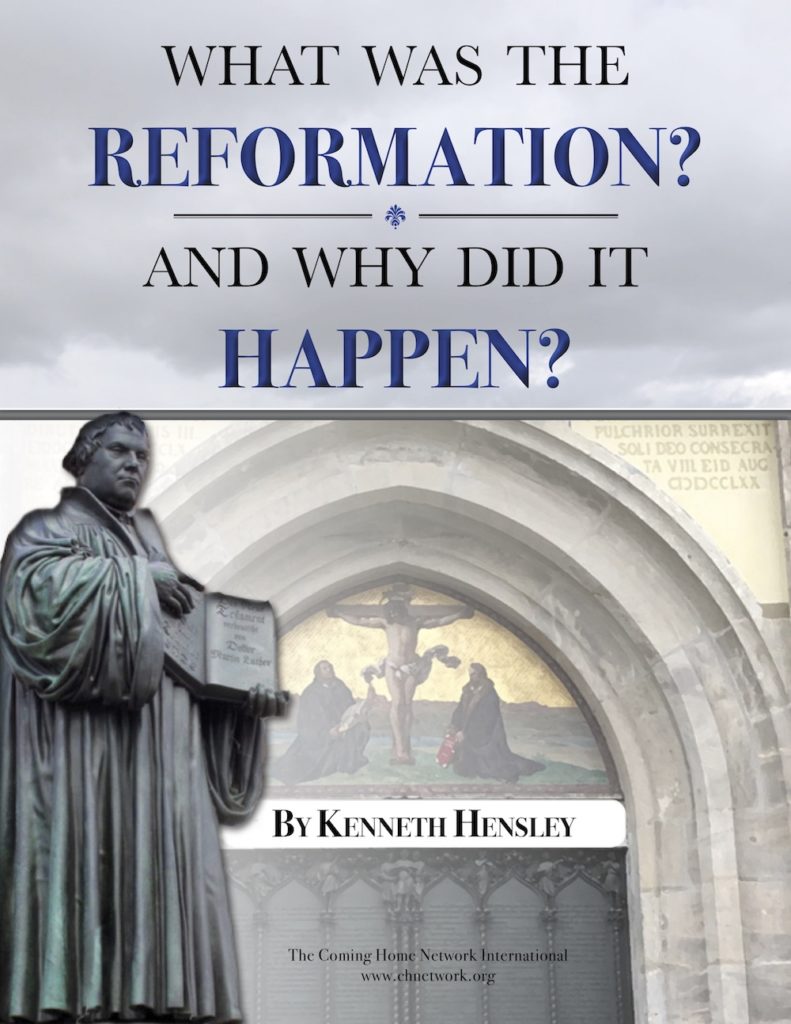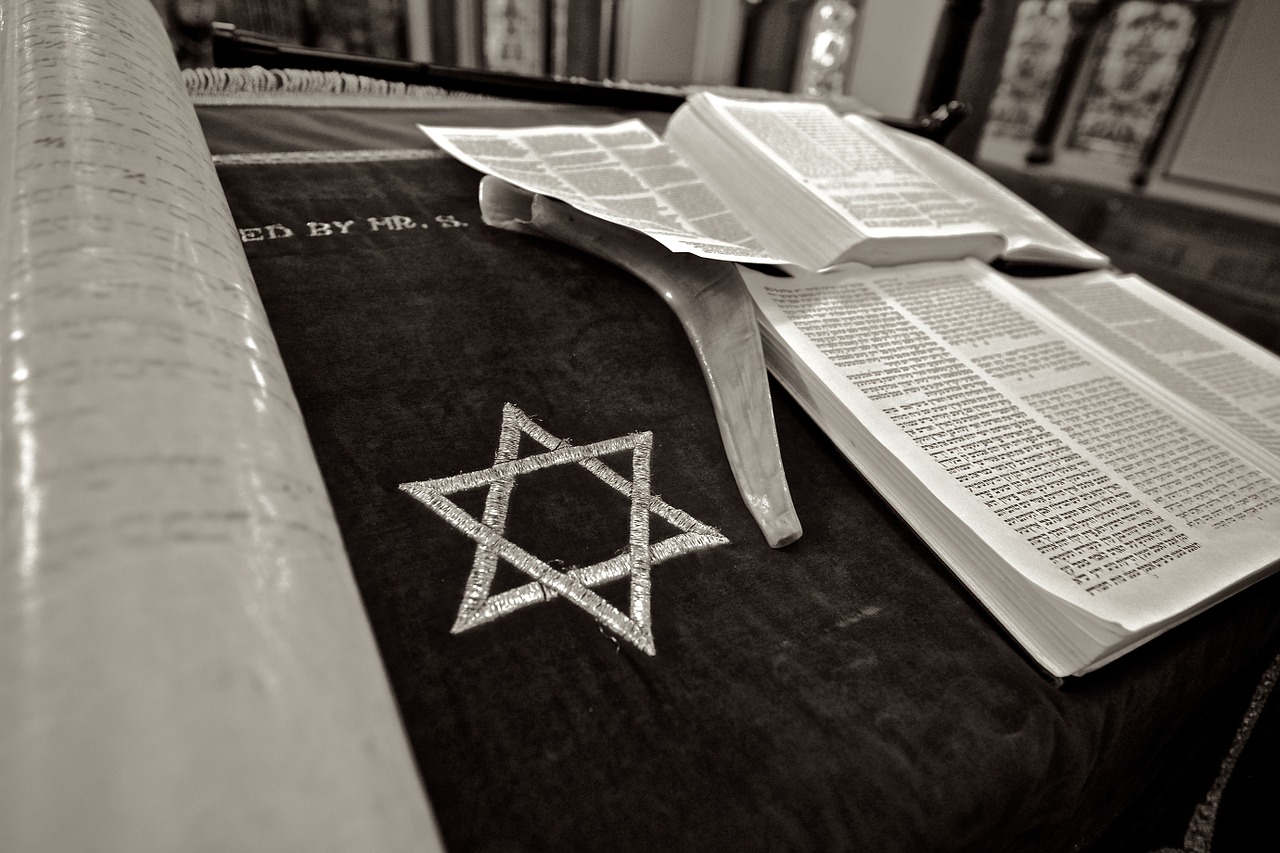
This is part of an ongoing series about Scripture and Tradition – stay tuned for more installments!
In 1995, I wrote a book called Twice Chosen that tells about my conversion from Orthodox Judaism to Roman Catholicism. In the preface to that book, I wrote the following:
On February 23, 1992, I celebrated the twenty-ninth anniversary of my baptism and entry into the Roman Catholic Church. At this point, I had spent half my life as a Jew and half as a Catholic. Sometimes the question is asked, “If a Jew becomes a Catholic, does he still remain a Jew?” For me the answer is quite simple. If being a Jew means living the Mosaic way of life, the answer is No. But a follower of Moses who becomes a Catholic continues in his love of Moses and adherence to many of his teachings, plus the spiritual guidance of Jesus. While the convert from Judaism to the Church is no longer a Jew in the religious sense of the term, he continues, as a Catholic, in his love of the faith of his fathers of old in Israel, seeing in Catholic principles and practices Judaism full-blossomed.
Practically all Christians believe that the Bible is the word of God. Many Christians believe the only legitimate revelation from God is that which is contained in Scripture alone (i.e. the Old and New Testaments). This is also known as “sola Scriptura.” They also believe that, with the aid of the Holy Spirit, one can interpret the sacred Scriptures in order to know the truth that is contained in them. This has resulted in over 30,000 Christian denominations, each claiming to know the truth revealed in the Bible.
Where is the unity that St. Paul writes about in his letter to the Ephesians?
I therefore, a prisoner for the Lord, beg you to lead a life worthy of the calling to which you have been called, with all lowliness and meekness, with patience, forbearing one another in love, eager to maintain the unity of the Spirit in the bond of peace. There is one body and one Spirit, just as you were called to the one hope that belongs to your call, one Lord, one faith, one baptism, one God and Father of us all, who is above all and through all and in all. (Ephesians 4:1-6)
St. Paul, a Pharisaic Jew, would have been horrified if he knew that by the twentieth century there would be great divisions within Christianity. Jesus, according to Scripture, intended that there be only one Church. At the Last Supper, Jesus prayed to the Father:
I do not pray for these only, but also for those who believe in me through their word, that they may all be one; even as you, Father, are in me, and I in you, that they also may be in us, so that the world may believe that you have sent me. The glory which you have given me I have given to them, that they may be one even as we are one, I in them and you in me, that they may become perfectly one, so that the world may know that you have sent me and have loved them even as you have loved me. (John 17:20-23)
How could there ever be one Church and one truth (faith) if every Christian denomination or person can interpret the Bible for himself or herself? As an Orthodox Jew, I was taught that there was no such thing as private interpretation of Scripture. When one reflects on the Scriptures, how they were formed, their complexity, and their sometimes apparently contradictory statements, it would seem only logical that Jesus would have provided His Church with a mechanism through which His truth regarding our salvation could be revealed to the world. I hope to show in this reflection, relying heavily on the Holy Spirit, why Catholics can feel secure that the mechanism does exist to make the Scriptures a great source of nourishment in helping us to know our God and to understand His will for us, when guided by Tradition, “entrusted to the living, teaching office of the Church alone” (paragraph 85, Catechism of the Catholic Church).
The Catholic Church and Orthodox Judaism believe that God reveals Himself in both Scripture and Tradition. Most Catholic doctrines are derived from both Scripture and Tradition. The branch of Judaism today known as Orthodox Judaism is very similar to Pharisaic Judaism at the time of Jesus. Jesus, who was raised as a Pharisaic Jew said:
Think not that I have come to abolish the Law and the Prophets; I have come not to abolish them but to fulfill them. (Matthew 5:17)
With all of this in mind, in Part II, we’ll begin by looking briefly at the Orthodox Jewish belief regarding revelation.

